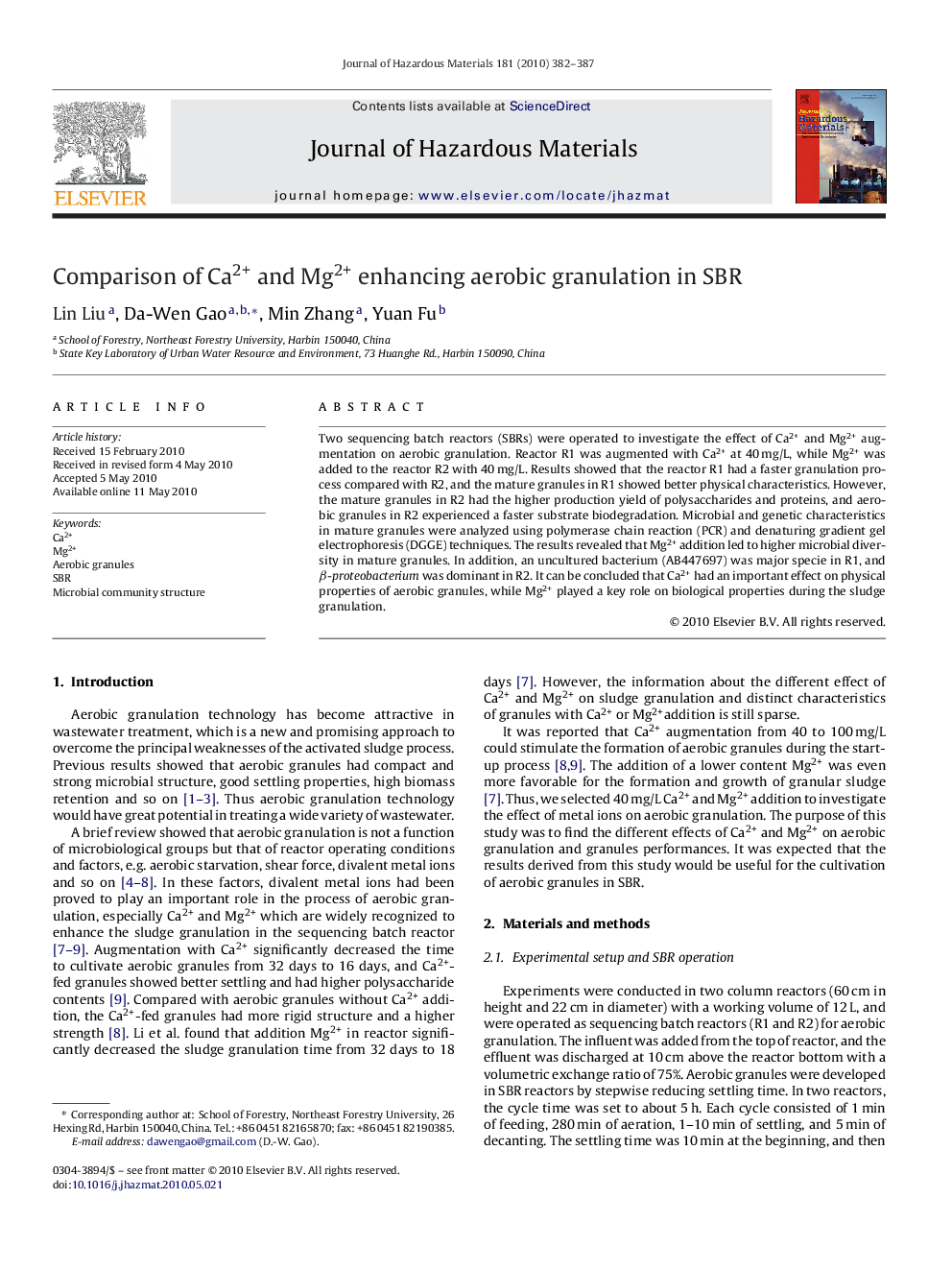| Article ID | Journal | Published Year | Pages | File Type |
|---|---|---|---|---|
| 579974 | Journal of Hazardous Materials | 2010 | 6 Pages |
Abstract
Two sequencing batch reactors (SBRs) were operated to investigate the effect of Ca2+ and Mg2+ augmentation on aerobic granulation. Reactor R1 was augmented with Ca2+ at 40 mg/L, while Mg2+ was added to the reactor R2 with 40 mg/L. Results showed that the reactor R1 had a faster granulation process compared with R2, and the mature granules in R1 showed better physical characteristics. However, the mature granules in R2 had the higher production yield of polysaccharides and proteins, and aerobic granules in R2 experienced a faster substrate biodegradation. Microbial and genetic characteristics in mature granules were analyzed using polymerase chain reaction (PCR) and denaturing gradient gel electrophoresis (DGGE) techniques. The results revealed that Mg2+ addition led to higher microbial diversity in mature granules. In addition, an uncultured bacterium (AB447697) was major specie in R1, and β-proteobacterium was dominant in R2. It can be concluded that Ca2+ had an important effect on physical properties of aerobic granules, while Mg2+ played a key role on biological properties during the sludge granulation.
Related Topics
Physical Sciences and Engineering
Chemical Engineering
Chemical Health and Safety
Authors
Lin Liu, Da-Wen Gao, Min Zhang, Yuan Fu,
